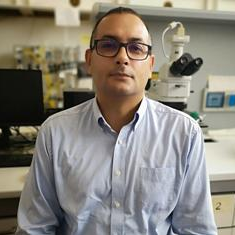Membrane Technology for Solid Particles Production
A special issue of Crystals (ISSN 2073-4352). This special issue belongs to the section "Industrial Crystallization".
Deadline for manuscript submissions: closed (20 June 2022) | Viewed by 6990
Special Issue Editor
Interests: membrane science and technology; crystallization—fundamentals and operations; water treatment processes; membranes materials—design and development; bioseparation and downstream processes
Special Issues, Collections and Topics in MDPI journals
Special Issue Information
Dear Colleagues,
This Special Issue of Crystals intends to serve as a unique, multidisciplinary, and comprehensive forum covering broad aspects of science and technology underpinning the application of membrane-based operations to solidification processes.
Submissions may focus on any of the following non-exhaustive list of topics:
- Membrane-assisted crystallization or precipitation of bio(macro)molecules (proteins, nucleic acids, polysaccharides, amino acids, organic materials, and their macromolecular complexes);
- Crystallization in pores and in nano-confined, patterned, or irregular surfaces, including modeling and simulation works;
- Reactive membrane crystallization processes;
- Membrane crystallization from brines and industrial (waste)streams for zero waste generation and mining purposes;
- Membrane crystallization for process intensification in hybrid systems and water desalination;
- Membrane-assisted precipitation processes;
- Microfluidics and microdevices for membrane-assisted crystallization.
Dr. Gianluca Di Profio
Guest Editor
Manuscript Submission Information
Manuscripts should be submitted online at www.mdpi.com by registering and logging in to this website. Once you are registered, click here to go to the submission form. Manuscripts can be submitted until the deadline. All submissions that pass pre-check are peer-reviewed. Accepted papers will be published continuously in the journal (as soon as accepted) and will be listed together on the special issue website. Research articles, review articles as well as short communications are invited. For planned papers, a title and short abstract (about 100 words) can be sent to the Editorial Office for announcement on this website.
Submitted manuscripts should not have been published previously, nor be under consideration for publication elsewhere (except conference proceedings papers). All manuscripts are thoroughly refereed through a single-blind peer-review process. A guide for authors and other relevant information for submission of manuscripts is available on the Instructions for Authors page. Crystals is an international peer-reviewed open access monthly journal published by MDPI.
Please visit the Instructions for Authors page before submitting a manuscript. The Article Processing Charge (APC) for publication in this open access journal is 2600 CHF (Swiss Francs). Submitted papers should be well formatted and use good English. Authors may use MDPI's English editing service prior to publication or during author revisions.
Keywords
- membrane-assisted crystallization
- solid particle production
- reactive crystallization
- protein crystallization
- process intensification strategy
- membrane technology
- membrane-assisted precipitation





